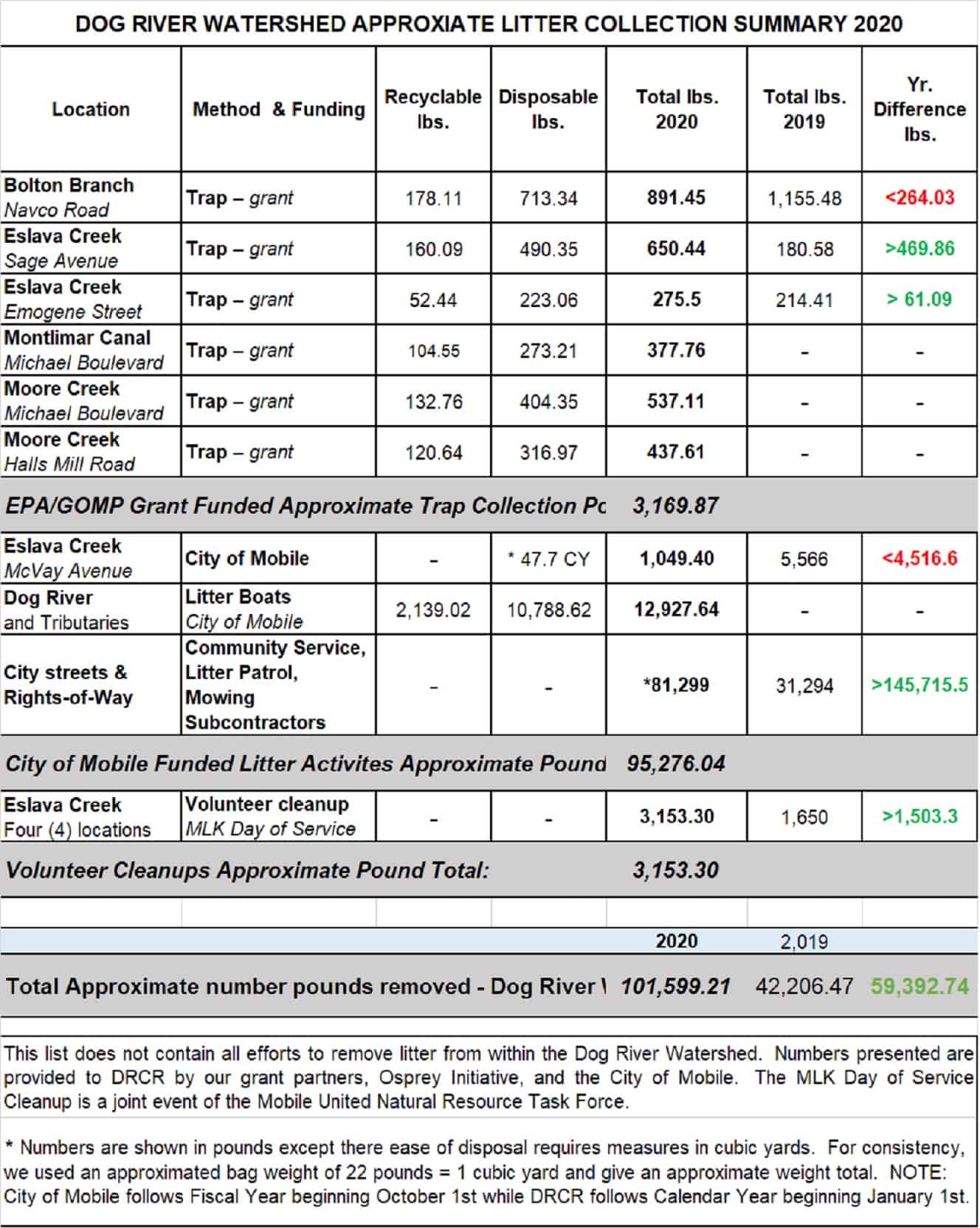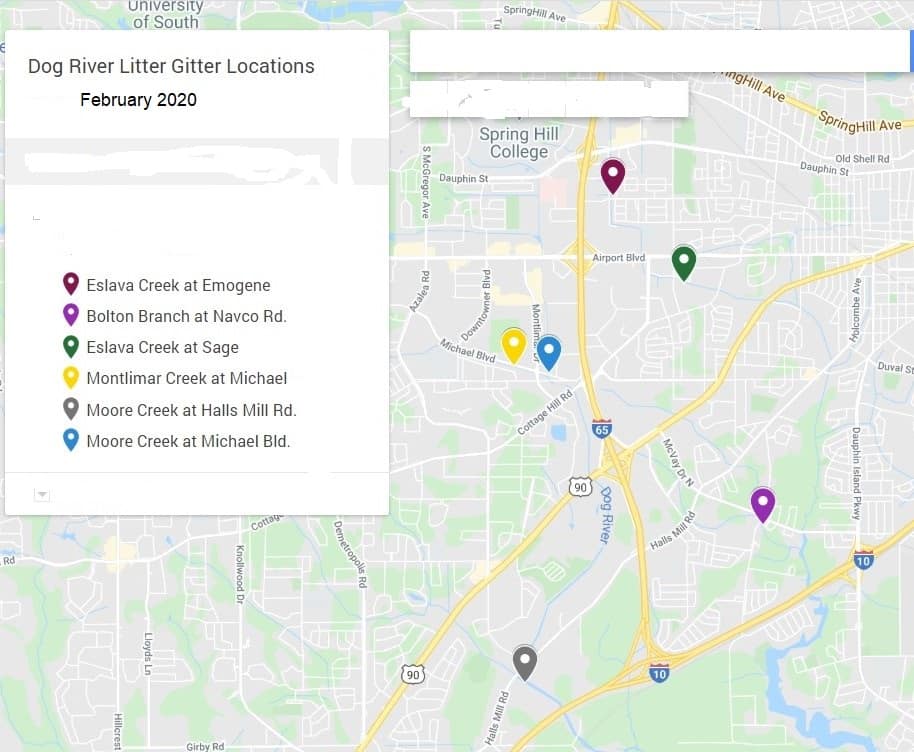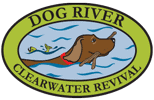Water Quality
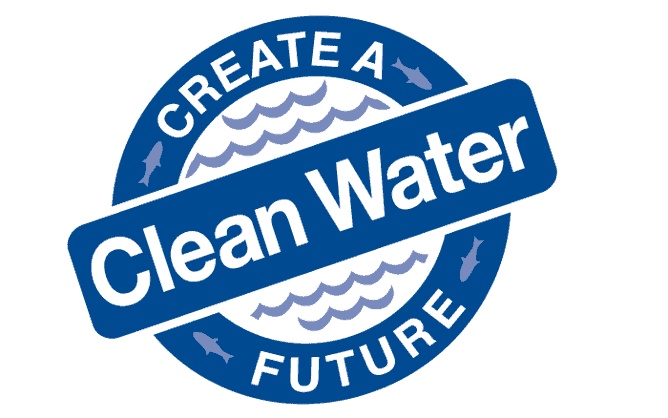
Programs Managed by Water Quality Committee
Trap the Trash
vvvirtual Goal: Reduce Trash in the Dog River Watershed.
Dog River Clearwater Revival and partners are implementing the Comprehensive Trash Abatement Program for the Dog River Watershed funded through a three-hundred, twenty-eight thousand dollar ($328K) grant from EPA’s Gulf of Mexico Program received in July 2019. The two year grant provides for a comprehensive assessment of trash sources, transport routes, fate and enforcement effectiveness in the Upper Dog River Watershed. The assessment information will be used to reduce trash in one stream segment and test a methodology for strategically reducing trash and litter at a watershed scale. Here is a brief update on 2020 activities as shown during the virtual Annual Membership meeting held January 19th, 2021.
Measurable Outputs: 1) 50% reduction in trash in one stream segment of Upper Dog River Watershed by deployment of three large and three small trash capture devices at strategically-located stormwater outfalls; 2) Train high school students and adults in Strategic Watershed Assessment Program (SWAMP) then monitor five sites; 3) Increase the number of truck owners who use a truck bed trash can to secure litter and debris; 4) One Trash Reduction Strategy for the City of Mobile, which will provide a proposed methodology for developing sustainable trash abatement based on strategic placement and maintenance of litter containment devices coupled with improved regulation and enforcement.
Partners include the Mobile Bay National Estuary Program (MBNEP), Mobile Baykeeper, and Partners for Environmental Progress (PEP). We also thank Osprey Initiative for their hard work and innovative spirit.
Pictured: (Top) Litter Collection Summary – 2019 & 2020; (Middle top) locations of litter containment devices within the Dog River Watershed, Feb.2020; (Middle bottom) Litter collected in containment device in Bolton Branch; (Bottom) Pie chart shows ETAP results taken from Litternator in Bolton Branch in January 2020. Escaped Trash Assessment Protocol or ETAP, is used to record specifics of trash captured which will be used to inform future decisions. Dog River is the second watershed to use this new data collecting protocol approved by the EPA.
Water Quality Monitoring
Goal: Develop better baseline data of existing water quality. Apply data in our ongoing efforts to combat the problem of storm water runoff.
Is it Safe to Swim in Dog River?
DRCR has approximately 20 Alabama Water Watch (AWW) trained monitors who have collected monthly data on water chemistry and bacteria for the past 5 years (2016-2020). When we revived our water monitoring efforts in 2015, our goals were to answer the following questions:
- Is it safe to swim in Dog River?
- Is water quality in Dog River getting better or worse over time?
- Is sea level rise affecting salinity in Dog River?
Click HERE to view the full report given to members during the 2021 Virtual Annual Membership Meeting.
Background
For twenty years, DRCR has helped train and provide necessary equipment to volunteers to collect water chemistry and/or bacteriological data on a monthly basis at one or more sites within their local watershed. The data that monitors collect is publicly available on the Alabama Water Watch (AWW) website www.alabamawaterwatch.org and can be used to alert state and local agencies to water quality issues. Nearly two dozen of these unsung champions of their local waterways measure: oxygen, turbidity & bacterial levels. New volunteers are always needed.
Shoreline Cleanup
Goals: Provide immediate relief from onslaught of urban litter, debris and trash streaming into the river.
- Sub-contract a cleanup crew to clean areas of the river that have litter build up and are not accessible to city crews or volunteers.
- Continue to sponsor and enlarge the several Dog River Zones of the Alabama Coastal Cleanup in the fall. This year’s event is September 19, 2020.
- Engage and lead the Fall Coastal Cleanup.
Dog River Watershed Management Plan
The Mobile Bay National Estuary Program (MBNEP) has facilitated watershed planning within the Mobile Bay estuary funded, in part, by BP Oil Disaster funds. The greater Dog River Watershed is among those plans and was released in 2018 following a lengthy process involving watershed working groups which were a coalition of federal, state, and local agencies; county and local governments; property owners; developers; and commercial interests. DRCR played a key role in these working groups.
Comprehensive Litter Abatement Plan
We were proud to present Dog River Clearwater Revival’s Comprehensive Litter Abatement Plan for the Dog River Watershed today to Mayor Sandy Stimpson and the Mobile City Council! The plan is the final product of our $328,101 EPA/GOMP grant awarded in 2019 to stem the flow of litter throughout Dog River water and its tributaries.
Using the information gained through the implementation of the projects included in the grant by our partners Mobile Bay National Estuary Program, Mobile Baykeeper, and Partners for Environmental Progress, and joining together with Osprey Initiative, and with input from the City of Mobile – the Comprehensive Litter Abatement Plan for Dog River Watershed has been developed to assist the City in strategically focusing its efforts and resources on litter management in this watershed.
Included in the plan are specific activities and timelines to:
➤ Reduce littering and litter in the environment
➤ Improve use of data to measure the effectiveness of efforts
➤ Increase community awareness, education, and involvement in litter reduction strategies
➤ Improve regulations, ordinances, and enforcement related to litter
➤ Centralize an organizational structure, and
➤ Increase consistent and sustained funding for litter management.
It is important to note while this strategy was developed for the Dog River Watershed, its goals and objectives are transferable to and replicable in other City watersheds, including Three Mile Creek, Eight Mile Creek and Garrow’s Bend; other coastal Alabama municipalities, and beyond.
We look forward to working with the City, all its departments, and all our partners to implement the strategies outlined in the plan as we all join together to Create a Clean Water Future.
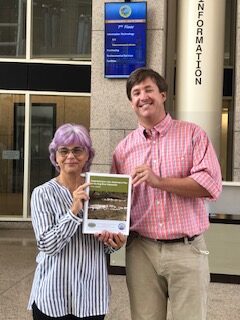
Appendices A – Litter Gitter Report, Osprey Initiative
Appendices B – GIS Report, Mobile Bay National Estuary Program
Appendices C – Truck Bed Trash Outreach Campaign, Partners for Environmental Progress
Appendices D – Truck Bed Trash Can Competition, Mobile Bay National Estuary Program
Appendices E – Municipal Litter Assessment of Comparable Cities, Mobile Baykeeper
Appendices F – Green Team Report, City of Mobile and Mobile County.
Community Development
- Revamp and update Dog River Watershed Awareness presentation and materials
- Present Dog River Clearwater Revival watershed presentation or set up informational booth at 4 group events a year (school/civic/community groups)
- Network with civic groups and businesses for outreach & funding opportunities
- Revamp DRCR website
- Send out annual snail mail newsletter and quarterly email blast updates with information on our events and information on the state of the watershed.
- Update social media as needed (Facebook, Twitter and Instagram)
- Continue to hold quarterly general member meetings with environmentally relevant speakers
Membership
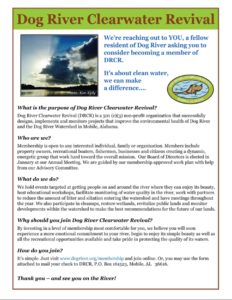
Newly designed Membership Flyer outlines the organization’s work and how to get involved. (05.2016)
- Recruit volunteers from designated neighborhoods along the river to reach out to neighbors for registration
- Update membership information
- Include member registration form and self addressed envelop in annual snail-mail newsletter
- Include membership reminders in quarterly emails
